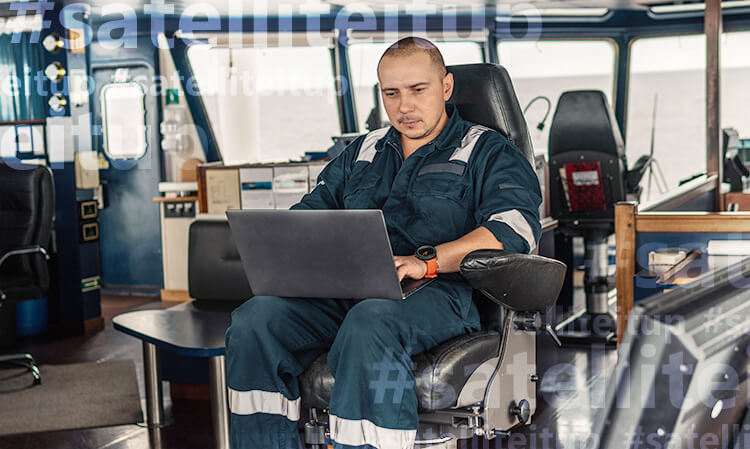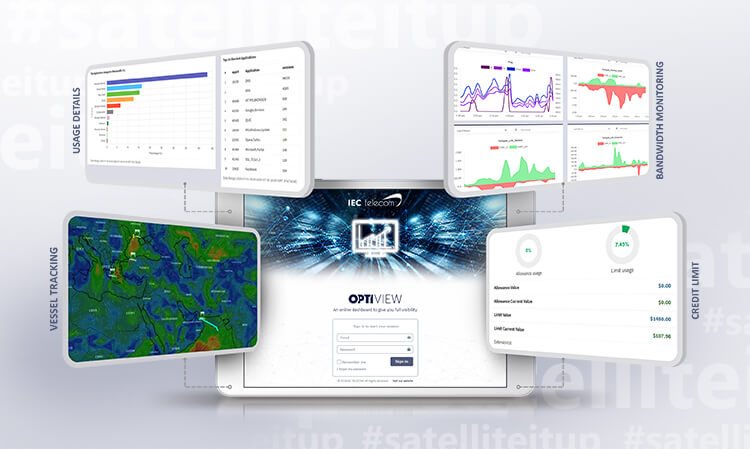Low-Earth Orbit (LEO) satellite connectivity offers an exciting paradigm-shifting opportunity for the greater adoption of efficient and sustainable digital products and applications. These modern satcom solutions enable access to reliable communication in underserved areas as well as business continuity on-the-move.
By 2030, LEO satellite technology is forecasted to account for 40% of the global satellite communications market. In fact, it is expected that by leveraging the economy of scale, manufacturers will be in a position to further decrease the prices for the terminals. As a result, some analysts forecast that the cost of LEO antennas may drop to USD 150-300 per unit.
However, widespread implementation of these low latency networks and successful compliance with the associated full licensing requirements of each country can take considerable time. Therefore, it is essential to invest in future-proof hybrid solutions for seamless connectivity today – when staying connected no matter where operations take place is considered a must-have, not a luxury.
In the maritime sector, hybrid connectivity solutions can empower vessel owners to seamlessly operate over distinct networks. For example, Ka- or Ku- band VSAT from geostationary (GEO) satellites or LEO services can be used as a primary channel; GEO-based L-band can be applied as a back-up, and cellular networks can be utilised as means to stay connected when the vessel is close to the shore. As a result, a maritime landscape where vessels are equipped with both VSAT and LEO technology is anticipated to persist in the near future.

With the advancement of satellite technology and digital transformation, vessel operators face an overwhelming range of communications solutions. Shifting the focus from hardware to network management solutions can help them to optimise their communication budget and future-proof the communication set-up on board.
Whether businesses opt for VSAT or LEO as the primary maritime communication link, having a resilient back-up is essential to ensure uninterrupted sea-to-shore connectivity. L-band terminals, such as the Thales VesseLINK 700 (powered by Iridium Certus®), Inmarsat FBB 500, and Thuraya Orion IP, are frequently selected as complementary solutions to Ka-/Ku-band terminals.
In the past, back-up networks were primarily seen as a means of emergency communication. However, in today’s dynamic business environment, they have evolved to become the cornerstone of business continuity.
Advanced applications like the OptiSoft and OptiConnect suites (offered by IEC Telecom) excel at providing a diverse array of essential digital services even in low-bandwidth settings. From seamless email exchange to high-quality videoconferencing and remote surveillance, these services are available while consuming less than 90 Kbps of bandwidth.
Moreover, as the vessel approaches the shore, it becomes a logical choice to route data traffic over the GSM channel. This channel not only delivers high-speed connectivity, but also offers a cost-effective solution for both corporate and personal communications.
It’s evident that vessels depend on multiple networks to ensure their optimal operation. Seamless failover and effective network management are pivotal in this regard. Utilising intelligent systems like OneGate, businesses can establish a robust hybrid network set-up onboard, ensuring uninterrupted business continuity at all times.

Powered by Starlink and enhanced by OneGate, Xpand empowers vessel owners with high-speed connectivity, remote network management, and cyber-security add-ons for digital operations at sea. This LEO/GEO hybrid solution supports heavy-consuming business and welfare applications.
Should the prime link go down, the system will be automatically switched to an L-band network with a set of optimised applications, supporting digital operations in a low bandwidth environment both for critical operations and crew communications.
Xpand comes with an advanced ICT toolkit, including a crew voucher system and a wide range of value-added services. The whole set-up can be tested, updated or upgraded seamlessly while the vessel continues its course. By optimising the operational cycle onboard, Xpand helps to decrease costs and reduce the vessel’s carbon footprint.
Importantly, Xpand’s cyber-security add-ons, from basic cyber shields to fully encrypted communication channels, make it invaluable for special operations at sea.

The key factor that acts as a success enabler in this hybrid ecosystem is a robust network management solution. It empowers vessel owners and captains to control network resources in real-time via the user-friendly OptiView dashboard. OneGate blends several networks under one umbrella and ensures that at each given moment, traffic is routed over the most cost-effective channel.
OneGate operates from a virtual platform. It means that new services can be added at any time, future-proofing business investments in onboard connectivity.
Key features include:
OneGate also enables a powerful cyber-security package with advanced intrusion detection and an onsite gateway anti-virus.

Increased digitalisation means increased cyber risks – i.e. the more autonomous the vessels are, the more they are prone to cyber-attacks. In 2020, security breaches cost $4 million – an all-time record.
Hybrid solutions by IEC Telecom are equipped with an advanced security toolkit to secure operations and ensure business continuity on board.
Ensuring efficiency in cost and time, as well as maintaining the integrity of transferred data, is at the core of IEC Telecom’s cyber-security solutions. These comprehensive cyber-security packages employ multiple layers of protection to shield on-board systems from known viruses and identify potential threats.
The majority of cyber threats stem from the misuse of personal devices. To minimise the risk of contamination, IEC Telecom takes measures to segregate mission-critical and crew welfare networks, implementing multiple access levels.
IEC Telecom’s value-added services also address the concern of data restoration. These ensure the uninterrupted operation of on-board systems by assisting IT personnel in recovering data in the event of any disruptions.
Keeping each vessel’s software up-to-date is vital for the cyber-security of the entire fleet. IEC Telecom offers remote deployment of software update patches and facilitates data replication between the ship and shore to enhance cyber-security measures.
The maritime industry stands on the cusp of a connectivity revolution with the advent of Low-Earth Orbit (LEO) satellite technology. As LEO’s dominance in the global satellite communications market steadily grows, embracing hybrid solutions for seamless connectivity is no longer an option, but a necessity.
These solutions, coupled with robust network management and advanced cyber-security, ensure uninterrupted operations, cost-effective communication, and future-readiness for vessels navigating the digital seas.
With the world increasingly reliant on connectivity, investing in these hybrid solutions can form the compass that guides maritime operations towards a secure and connected future.